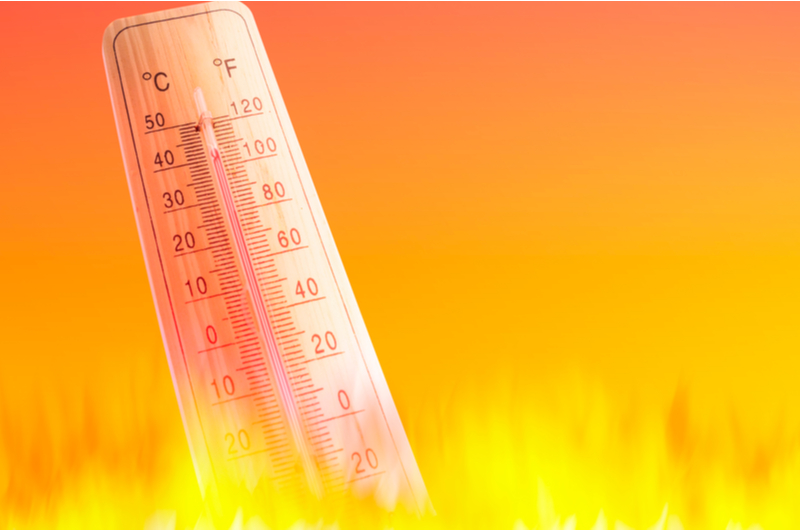Get Your Wild Fire Degree Faster
Fire Science careers are in high demand. Get your Fire Science faster and online.
Firefighting is dangerous for even highly trained certified professionals. Most U.S. citizens think of firefighters in an urban scenario putting out fires in various types of buildings. Wildfire and forest fire fighting, while requiring many of the same attributes and skills, also requires additional training and education. What are the best schools available for wildfire training in 2021? How do I get my wildfire degree faster? Both urban and forest wildfire training require strong physical skill sets, courage and safety education. Obtaining a wildfire degree trains you and teaches everything required to get hired in the field for this extremely serious job. Do you want to obtain an expedited wildfire degree and start working as quickly as possible? Read ahead for tips and information about to get your wildfire degree faster.

Training & Education
Training and education for a wildfire degree includes fire science, fire prevention, firefighting courses and more. Educational achievements for wildfire programs are like those earned in other subjects. Certificate programs and associate, bachelor, masters and doctoral degrees are all available.
Intense physical and educational training are also required. Educational training focuses on general material in addition to areas of studies specific to various agencies. The range of educational topics is also vast. For example, agriculture, civil/forest engineering, crop/plant science and natural resources are all potential study topics. Soil science, wildlands fire science and range management/conservation are also common educational wildfire degree topics.
Physical training requirements include passing the Work Capacity Test, which focuses on your ability to undertake light, moderate and arduous activities without losing your ability to safely and properly do your job. Each federal agency requires you to pass this test before issuing an Incident Qualification Card (also referred to as a red card). An Incident Qualification Card shows prospective employers and applicable agencies you are qualified to handle all tasks relating to each firefighting job and incident.
Top Schools Offering Wildfire Degrees Today
Numerous schools offer a variety of wildfire degrees in 2021. Certificate associate, bachelor, masters and doctoral programs are all available from well-known universities across the nation to smaller schools and academies specializing in firefighting training. What are some of the top U.S. schools offering wildfire degrees today?
-
University of Florida – Agricultural and Life Sciences College (Bachelor of Urban Forestry).
-
Purdue University (Bachelor of Science in Fire Science).
-
Antelope Valley College (AVC) – (Fire Technology programs).
-
Interagency Aviation Training (IAT).
-
National Wildfire Coordinating Group (NWCG) – (Refresher programs & certificates).
-
Keiser University (Online Associate Fire Science Degree).
-
University of New Haven (Master’s in Emergency Management for firefighters).
-
American Military University (AMU) – (100% online Fire Science degrees & certificates).
-
Emergency Medical Technician (EMT) Certificate.
Costs & Financial Aid
The cost of obtaining a wildfire degree varies widely based on the type of degree obtained, school tuition policies and the state in which you live. Some certificate programs cost just over $1,000 for tuition and fees, excluding any additional applicable expenses. For example, one particular Antelope Valley College wildfire program costs $1,104 for tuition and fees, while Lake Tahoe Community College charges $1,221 for tuition and fees. Degree programs also vary greatly even within the same school. An associate wildfire degree at Purdue University costs approximately $15,000 plus other expenses. The PU bachelor and master’s wildfire degree programs cost $24,000 and $22,000 respectively.
Financial aid might be available through the federal government by filling out the Free Application for Federal Student Aid (FAFSA) form and/or applying for the U.S. Federal Pell Grant. Additional wildfire degree-based financial aid resources are also available. Fire and forestry scholarships are awarded to qualified applicants, such as the Heather Westphal Memorial Scholarship Award, which is sponsored by the International Association of Fire Chiefs Foundation (IAFCF). Additional wildfire degree scholarships and grant programs include:
How to Get a Wildfire Degree Faster
Associate degree programs commonly take two years to complete. Bachelor degrees take four total and masters take two years longer to obtain than a bachelors. It is possible to complete associate, bachelor and master’s degrees in less than two years each, however, if accelerated scheduling is available. It is possible to complete various certificate programs in less than one year, and sometimes in as little as three months. A GS-3 Forestry Technician job might be available for you with only a high school diploma, six months of general employment experience and one year of additional specific wildfire training/education on your resume, however. Contact additional resources and agencies such as the Wildland Fire Learning Portal (WFIT) and the U.S. Department of the Interior (U.S. DDI) for more information on how to get a wildfire degree faster in 2021.
How to Get a Job with a Wildfire Degree
How do I get a job with my wildfire degree? Local, state and federal forestry and other applicable agencies all offer job opportunities for graduates with a wildfire degree. Every organization has proprietary hiring requirements and application processes. Federal agencies offering jobs to graduates with wildfire degrees include the Bureau of Indian Affairs and U.S. Fish and Wildlife Service. Federal agencies with wildfire job opportunities include the Department(s) of Natural Resources and Forestry, respectively. Local organizations vary from state-to-state and region-to-region.
Announcements for wildfire positions as posted during off-season months between October and December. Actual hiring periods range from January through March. Applications submitted in September or October have potential to receive the most consideration because they are reviewed prior to many other applicant submissions. USA Jobs (a government-facilitated website) offers an excellent search portal resource for finding wildfire-related jobs available each season. Contact the appropriate local, state and federal agencies for all other opportunities for jobs you can obtain with your wildfire degree.
